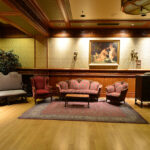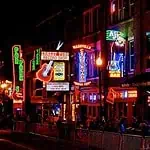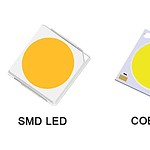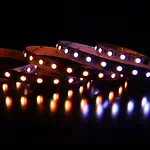Be it indoors or outdoors; lighting plays an important role in maintaining utility and enhancing the aesthetics of a space. It does not just impact the look of a place but also influences the mood of those using it. Going wrong with the choice of lights can negatively impact the productivity and mission you want to accomplish with it.
Understanding different types of lights, their differences, and their applications is essential. While lighting outdoors, Floodlight, Spotlight, and Downlight are the most preferred lights. However, their applications are not necessarily the same. This guide entails their differences and applications. So, let’s get to it.
Basic Differences Between Floodlight, Spotlight, and Downlight
The primary difference between the three types of lights is the beam width. You will get a narrow beam with floodlights, a wider one with floodlights, and downlights fall somewhere in between. Let’s take a detailed look at all three of them;
| Characteristics | Floodlight | Spotlight | Downlight |
| Beam Angle | 45-120 degrees | 15-110 degrees | 45 degrees |
| Spread | Wide | Narrow | Narrow |
| Purpose | Generalized Illuminance | Highlighting specific objects | Aesthetics |
Spotlights
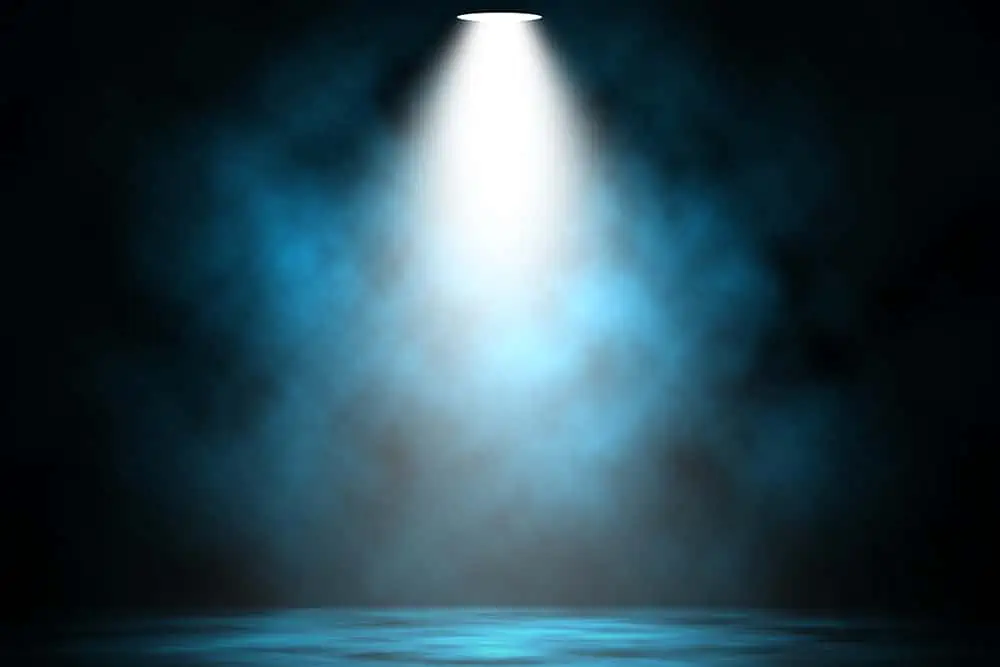
As the name suggests, spotlights illuminate a particular “spot” in an area. Such lights produce a concentrated but narrow beam illuminating an object or area. You would notice a cone-shaped bone with these lights, which you can adjust as per requirements. A common example of these lights is the ones used during theater performances. Typically, the beam emitted by these lights has an angle of 45 degrees, making them easy to maneuver. Thus, you can shift the light during stage performances as the character moves across on stage.
Furthermore, spotlights feature a fixing bracket or mounting plate, which is either connected to a ceiling or wall. Each bracket or mounting plate can have more than one spotlight affixed to them. LED spotlights come in a range of power, which also determines the lumens of the light. You will get more brightness with LED spotlights that uses higher watts, and vice versa.
Because these lights are typically used to illuminate objects, modern spotlights are also equipped with motion sensors. Such lights are particularly useful for using them during stage performances. However, you should avoid the additional expense if you want to project a floodlight at a single point.
Floodlights
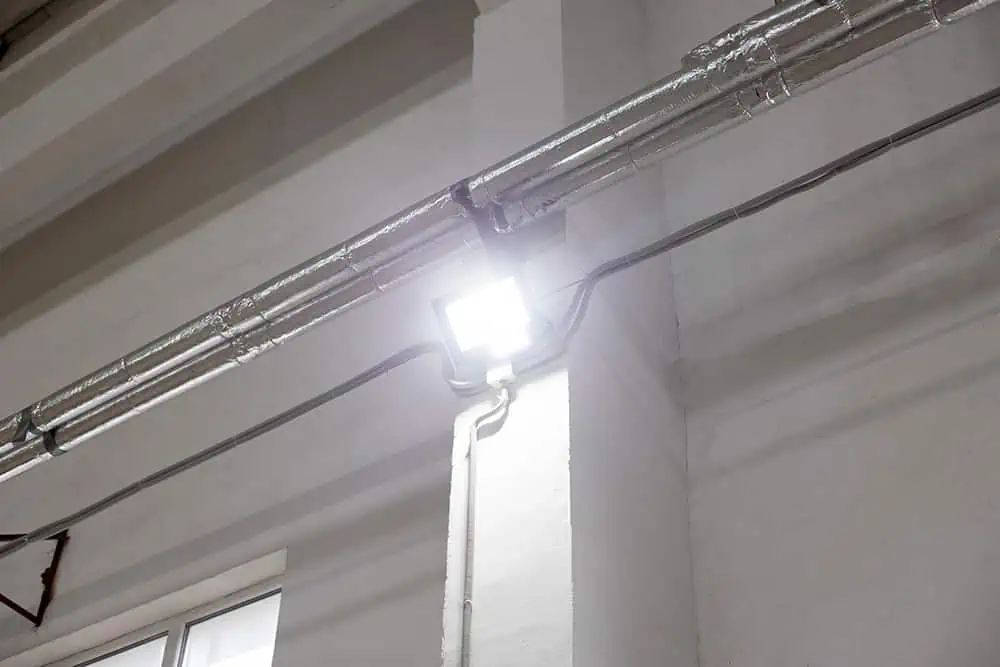
Floodlights are opposite to spotlights, which means that these lights illuminate the entire area instead of illuminating a particular spot. In order to do that, the beam angle of floodlights is wider at about 120 degrees. Since the throw of floodlights is wider, they offer a generalized illuminance. You can use these lights to illuminate a larger area. For example, stadiums use floodlights to illuminate pitches.
Floodlights typically have four components: a yoke, a diode, and housing. Housing is the outer body that surrounds the diode and prevents the beam from spilling in different directions—furthermore, housing features a reflector that enhances light outputs. The yok supports the light and allows the users to rotate it.
Like spotlights, floodlights come in a range of powers. Typically, the wattage of floodlights ranges from 15 watts to 400 watts, but some options can go even higher. As the power of floodlight increases, so does the lumen and, consequently, the illumination.
Furthermore, you will require less wattage in floodlights to brighten the entire place than the spotlights. Since the light emitted from floodlights have a wider beam, it covers a larger area and decreases the number of lights required to illuminate a place. You will also find a variety of color temperatures in floodlights, but the 4000-4500K range will work for most domestic purposes.
Downlights
Downlights are more diverse and have more of an aesthetic role than a utilitarian. Unlike spotlights, downlights do not protrude from an attached surface. Instead, such lights are installed within different structures such that only the front part of the downlights is visible. Hence, these lights improve the look of modern architects.
Furthermore, downlights are very versatile and offer a range of options. You can either get flush to the surface, recessed, rotating, or fixed. The beam angle of downlights can also vary between wide, medium, and narrow. Depending on the shape of the downlights, these can be categorized into several types: fixed, tilt, eyeball, and wall washer.
Fixed Downlights produce lights in the downward direction and cannot be moved around. The tilt downlights offer a margin of 20 degrees for adjustability. Furthermore, the eyeball is pretty much similar to tilt, but the center of such downlights protrudes out to provide more flexibility. Lastly, wall washers and downlights have hinged houses that one can adjust to spread light on different parts of a space.
Like the floodlights and spotlights, the wattage of downlights also varies and determines their lumens. The choice of wattage depends on the area’s requirement and the lighting’s general purpose.
Applications of Floodlight
Floodlights deliver a wide beam angle that illuminates a broader space and determines its applications. You can use these lights in different areas ranging from landscapes to stadiums. Since floodlights offer a generalized illuminance, they make the foundation of ambient lighting. You can use them in retail stores to brighten the entire space and use other lights to enhance aesthetics. The basic role of floodlights is to enhance the utility of a space.
The wattage of floodlights plays an important role in improving the utility of space. You cannot select LED floodlights with too higher wattage because they will produce glare and cause inconvenience. Similarly, you cannot go with too low wattages because that will compromise the utility of a space.
Once you have figured out the right wattage and size of floodlights, you can use them in;
- Manufacturing plants
- Ports
- Stadium
- Classrooms
- Facade
- Landscape
- Retail stores
- House garages
Application of Spotlight
Spotlights project a concentrated beam which makes it most suitable for aesthetic purposes. You can use spotlights to highlight different objects and areas around a place. For example, in landscape lighting, spotlights can highlight the different elements in the landscape, including trees, a piece of the architect, or any other such element. Since spotlights have a concentrated beam, you cannot use them for universal lighting.
Spotlights are also used during stage performances to highlight an object or person performing. Furthermore, there are different colors and types of spotlights to suit different applications. For example, you can get a green spotlight to highlight a tree in the garden. Similarly, one can use small spotlights to highlight engravings on the facade. Other applications of spotlights include;
- Uplighting
- Silhouetting
- Shadowing
- Moonlighting
- Washing
Application of Downlights
Downlights are the most versatile of the options discussed before and have a multitude of applications. You can use downlights to create different zones for ease of navigation, highlighting essential parts of a house’s interior and exterior. Furthermore, downlights can also work as task lights. You can use them in combination with decorative lights to enhance the appeal of a place.
Downlights come in a variety of fixtures, and all of them have separate applications. These include trim that looks like a bezel on the ceilings. Recessed, which appears as if the bezel is plastered into the ceilings. Lastly, the Trimless looks like a bezel plastered-in but is flushed with ceilings.
Depending on the type of downlights, you can use them to recess light ceilings, task lighting, illuminant of art pieces, and light the wall.
FAQs
No, spotlights and downlights are different lights. Even though both types concentrate the light beam, spotlights can be moved in different directions, but downlights cannot.
The fundamental difference between a floodlight and a spotlight is the beam angle. Spotlights concentrate light beams and have a narrower angle which can be used to highlight a particular object in space. On the other hand, Floodlights have a broader beam that distributes in a place and offers a more generalized illuminance. Thus, floodlights are typically used to illuminate larger areas like auditoriums and stadiums.
Spotlights and floodlights have different roles, and you cannot use them interchangeably. At places where concentrated beams are required, spotlights work the best. Whereas, if you want to get a universal illuminance, floodlights are the ideal option.
The brightness of the light depends on the lumens, which in turn depends on the wattage. But if both floodlight and spotlight wattage are equal, the spotlight will appear brighter in a specific region, whereas the floodlight will look brighter in a large area.
Conclusion
Spotlights, floodlights, and downlights are the three most common types used in domestic and commercial spaces. The fundamental difference between them is the beam angle, which in turn determines their applications. You can use spotlights to highlight specific objects, floodlights to get universal illuminance, and downlights for purely aesthetic purposes.
The market offers a variety of options in all three types, which should be picked based on general lighting requirements and goals one wants to accomplish with it. We hope this piece has helped identify the difference between them and highlight their applications.
LEDYi manufactures high-quality LED strips and LED neon flex. All of our products go through high-tech laboratories to ensure the utmost quality. Besides, we offer customizable options on our LED strips and neon flex. So, for premium LED strip and LED neon flex, contact LEDYi ASAP!
